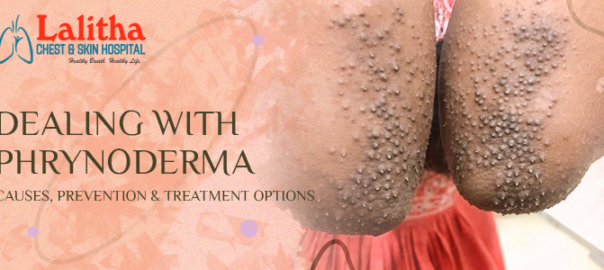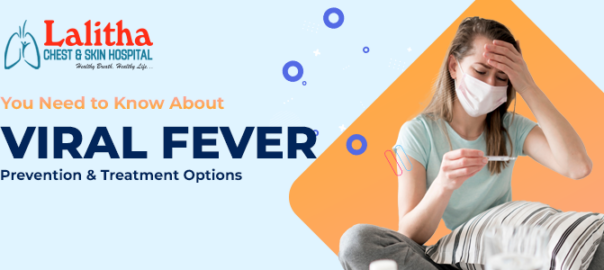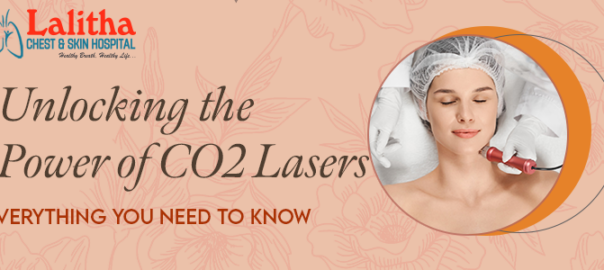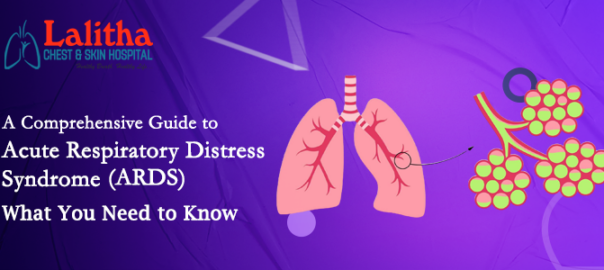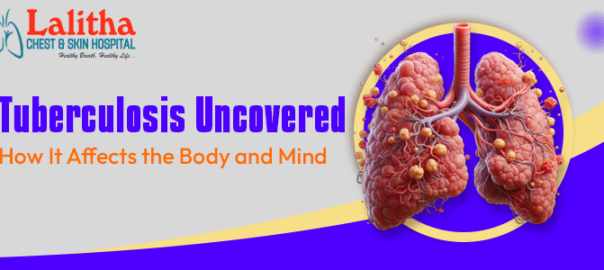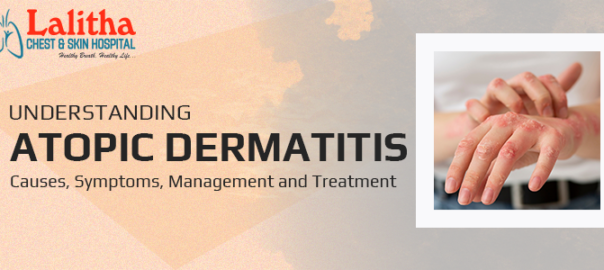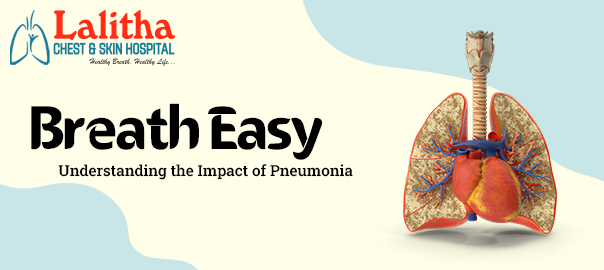For the last 5 years, the cases of viral Pneumonia in Karimnagar have been consistently on the rise. The pandemic has further induced a lot of fear in the public.
Though the pandemic has subsided, due to its resemblance to Pneumonia, the public is presuming it is a COVID condition. At Lalitha Chest & Skin Clinic, we regularly treat these cases of fear. So, in this blog, we have decided to dispel this myth by delivering all the essential information about this condition.
So, with guidance from Dr. Raj Kumar Korra at Lalitha Chest and Skin Hospital, this blog delves into the causes, symptoms, treatment options, and preventive measures of viral Pneumonia.
What is Viral Pneumonia?
“Viral Pneumonia is a lung infection caused by viruses that inflame the air sacs, making breathing difficult. Unlike bacterial Pneumonia, which can be treated with antibiotics, viral Pneumonia requires different management strategies”, says Dr. Raj Kumar Korra, MD, a leading respiratory doctor in Karimnagar.
What Causes Viral Pneumonia?
Viral Pneumonia is triggered by various viruses, including:
- Influenza (Flu) Virus: A common cause, especially during flu season.
- Respiratory Syncytial Virus (RSV): Primarily affects infants, young children, and older adults.
- SARS-CoV-2 (COVID-19): A significant cause of severe viral Pneumonia in recent years.
- Adenovirus: Can cause mild to severe respiratory infections.
- Parainfluenza Virus: Often leads to respiratory infections in children and immunocompromised individuals.
Symptoms of Viral Pneumonia:
Symptoms can range from mild to severe, depending on the virus and the patient’s health. Common signs include:
- Fever and chills: One of the first indications of an infection.
- Cough: Often dry at first but may produce mucus later.
- Shortness of breath: Difficulty breathing, especially during physical exertion.
- Chest pain: Sharp pain that worsens with deep breaths or coughing.
- Fatigue and weakness: Due to the body’s immune response fighting the infection.
- Headache and muscle pain: Common flu-like symptoms.
- Bluish lips or fingertips: A sign of severe oxygen deprivation, requiring immediate medical attention.
Prevention: How to Prevent Viral Pneumonia?
Preventing viral Pneumonia involves reducing exposure to infectious viruses and strengthening immunity. Key preventive measures include:
- Vaccination: Flu shots, COVID-19, and RSV vaccines (for high-risk individuals) can significantly lower the risk.
- Hand Hygiene: Regular handwashing with soap and water prevents the spread of viruses.
- Avoiding Close Contact with Sick Individuals: Especially in crowded or enclosed spaces.
- Wearing Masks: Particularly in high-risk areas or during flu seasons.
- Boosting Immunity: A healthy diet, regular exercise, and adequate sleep enhance immune function.
- Disinfecting Surfaces: Cleaning frequently touched surfaces can reduce virus transmission.
Treatment Options for Viral Pneumonia:
Since antibiotics do not work against viruses, treatment focuses on symptom management and supportive care:
- Rest and Hydration: Essential for recovery and preventing complications.
- Over-the-counter Medications: Pain relievers (e.g., acetaminophen, ibuprofen) help manage fever and body aches.
- Antiviral Medications: In some cases, antiviral drugs like oseltamivir (Tamiflu) may be prescribed for influenza-related Pneumonia.
- Oxygen Therapy: For severe cases with breathing difficulties.
- Hospitalization: Required for individuals with severe symptoms, compromised immune systems, or underlying conditions.
When to See a Doctor?
While mild viral Pneumonia can often be managed at home, seek medical help if you experience:
- Persistent high fever (above 102°F or 39°C).
- Difficulty breathing or shortness of breath.
- Chest pain that worsens with breathing or coughing.
- Confusion or dizziness.
- Bluish skin, lips, or fingertips.
Viral Pneumonia is a severe respiratory infection, but with timely treatment and proper preventive measures such as staying up to date with vaccinations, practicing good hygiene, and seeking medical care when needed, most people recover fully.
If you or your kith or kin are experiencing any of the above symptoms, you do not have to wait to search Google with queries like: doctor for Pneumonia near me, lung care hospital near me, or the best pulmonary hospitals near me in Karimnagar. You can directly head to Lalitha Chest and Skin Hospital in Karimnagar, where the best lung doctor in Karimnagar, Dr. Raj Kumar Korra, specializes in viral pneumonia treatment. Please book your appointment today by visiting our website: https://lalithachestandskinhospital.com/


